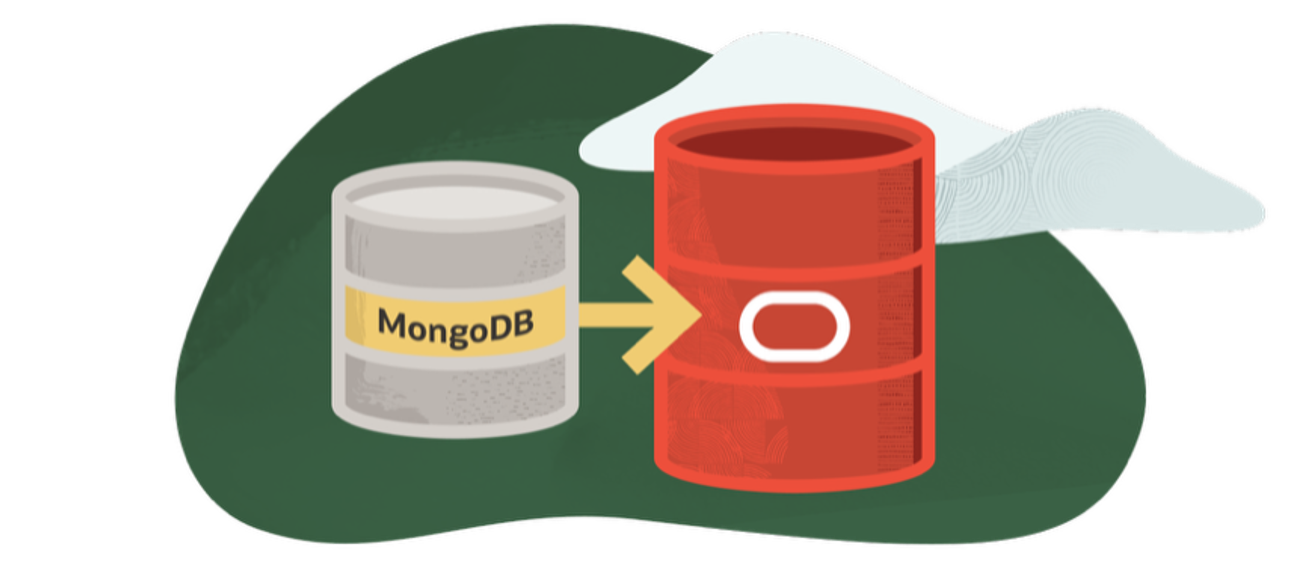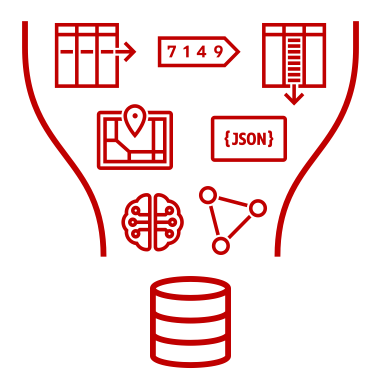I recently spoke with a customer weighing a move from MongoDB to either Oracle Autonomous JSON Database or MongoDB Atlas. Their motivations were familiar: licensing challenges, growing operational complexity, expanding applications, and — like everyone else — the urgent push to enable AI. We discussed many of the operational and cost-savings benefits using JSON in an Oracle Database along with the OCI platform pricing advantages. Ultimately, the customer was convinced that many of their MongoDB problems could be solved – and I thought others would benefit from hearing their story.

Here’s what mattered most to them:
- Business Growth: With rapid data growth, scalability and performance were top concerns. We discussed Oracle Database 23ai clustering for high availability and the Exadata optimizations that support enterprise-level scale. For their JSON/BSON workloads, Oracle’s JSON + OSON was especially important — optimizing both transactional and analytical performance. While MongoDB can scale, it does so with heavy data redundancy that drives up IO, storage, and administrative costs.
- Administrative Efficiency: Their MongoDB estate had mushroomed into dozens of replica sets, projects, and clusters — all requiring constant DBA attention. In MongoDB, developers often end up wearing two hats: DBA and application developer. Oracle Autonomous Databases, by contrast, automate patching, tuning, scaling, and monitoring so developers can focus on building applications, not administering databases.
- Architecture Complexity: As their applications grew, so did schema and project sprawl. The result was a patchwork of single-purpose data stores and constant data movement between them — increasing latency and complicating governance over duplicate datasets. We discussed how a multi-modal Oracle Database could consolidate stores, eliminate data movement, and improve throughput.
- Security and Compliance: Compliance wasn’t their top concern, but they valued Oracle’s decades of built-in, defense-in-depth security: data redaction, sensitive data protection, HA/DR consistency, and row-level security. Oracle’s model, unlike MongoDB’s, is kernel-integrated, policy-driven, and separates DBA duties from direct data access — a strong insurance policy for the future.
- Reporting and Analytics: Departmental users wanted real-time reporting, but with MongoDB the data had to be pipelined into additional stores before SQL-based tools could access it. Oracle Database supports both SQL and JSON on the same data, simultaneously, eliminating duplication and enabling direct, real-time reporting.
- Complex Analytics and GenAI Integration: They were also adding LLM interfaces and new AI-driven experiences. Their predictive ML models already lived in separate data stores, introducing yet more latency. Oracle Database, by contrast, integrates machine learning, graph, text, and vector search directly — enabling advanced analytics and AI without data movement. MongoDB cannot match that breadth of capability or level of integration.
Migrate or Coexist?
As the value of the converged database became clearer, they wanted to prove it gradually, without risking disruption. They considered a phased approach — starting conservatively with two databases before moving fully to Oracle.
- Proof of Concept: Use Oracle for selective analytics and reporting, replicating data in micro-batches. This showed that SQL-based reporting was faster, more flexible, and more versatile than MongoDB reporting.
- Broader Reporting: Expand Oracle reporting across more use cases and volume. At this stage, duplicate data issues remained.
- Full Replacement: Replace MongoDB entirely with Oracle, using JSON as a native type. The efficiency gains of a single database were clear, but success depended on one condition: all data had to transfer with zero disruption to applications.
This phased approach gave the customer confidence. Each step showed value, but also reinforced the limitations of duplication and latency. By the end, the efficiency of a single Oracle Database became the obvious destination.
Best Oracle Database for JSON Support

Oracle Database introduced JSON support in version 12.1 back in 2014. Now, all Oracle Databases support JSON data types from on-premises to the full Oracle Database cloud portfolio – Base Database Cloud Service, Oracle Exadata Cloud, and the three variants of the Autonomous Database: JSON, Autonomous Transaction Processing, Autonomous Data Warehouse.
Since Oracle offered all these choices, the proof of concept decision came down to the simplest starting point. We discussed the Autonomous Database cloud solutions:
- Oracle Autonomous JSON Database: Ideal for JSON-exclusive environments, offering Autonomous capabilities (automated tuning, scaling, patching, backup and recovery).
- Oracle Base Database or Autonomous Transaction Processing: Combine JSON with high-performance relational support, balancing JSON and traditional features.
- Autonomous Data Warehouse: Perfect for analytics, data warehouses, and data lakehouses.
MongoDB vs Oracle: Single-purpose vs. Converged
The customer and I talked about the limits of a single-purpose MongoDB database. It was built for one thing — storing and retrieving JSON — and it does that well. But the moment they needed more, like reporting, analytics, graph traversal, or vector search, the data had to be exported elsewhere. That meant more databases, more ETL, and more complexity.
 Oracle Database takes a different path. It’s multi-modal: JSON, relational, graph, analytics, and vector all live together. Instead of designing for multiple systems and managing separate islands of availability, recovery, patching, and security, you design once and manage one. This hit home for the customer, who had multiple ETL pipelines pushing the same transaction data into different systems — a setup that worked, but slowed real-time access and created bottlenecks.
Oracle Database takes a different path. It’s multi-modal: JSON, relational, graph, analytics, and vector all live together. Instead of designing for multiple systems and managing separate islands of availability, recovery, patching, and security, you design once and manage one. This hit home for the customer, who had multiple ETL pipelines pushing the same transaction data into different systems — a setup that worked, but slowed real-time access and created bottlenecks.
For architects and developers, the difference was clear. Oracle treats JSON as native — a first-class data type that sits alongside relational, graph, text, spatial, image, and vector. All of these can be combined in a single SQL statement without transformation. For DBAs, that means standardized tuning, high availability, patching, automation, and security. For developers, it means faster innovation without being boxed in by one model.
One feature that stood out was JSON Relational Duality Views. These let relational data appear as JSON collections without schema changes, eliminating the need for ORM tools and the ongoing work of keeping MongoDB collections and relational schemas in sync.
The customer acknowledged the logic — consolidating into one database is inherently simpler and less risky than juggling many — but worried about migration risk. What if the app broke, or the data got corrupted? That’s where Oracle’s approach mattered: no change to the data, no change to the application. That reassurance eased their concern.
And the benefit isn’t just lower cost and simpler management. With all data models unified, there’s no ETL delay, no duplication, no inconsistent SLAs. The data is already in place, ready to deliver insights and innovation.
In the end, the customer agreed: one database really is simpler, less expensive, and more powerful.
Simple Migration with Free Tools
Migration consists of two simple steps. First, export data using standard MongoDB tools, then import the data in any Oracle Database using the free Oracle Database API for MongoDB. Oracle also offers Oracle GoldenGate for MongoDB Migrations, a free tool that supports zero-downtime online migrations.
Once the data is moved, the applications simply change their database connect string to point to the Oracle Database. This change takes only minutes and applications will continue to operate as normal. Similarly, using the Oracle MongoDB API, developers can also continue to use their existing MongoDB’s open-source tools and drivers.
With this understanding, the customer evaluated the entire migration process and the Autonomous JSON Database in a free proof of concept process. You can try this yourself by signing up for the Oracle Cloud Free Tier and provisioning any Oracle Database, deploy the MongoDB API, and optionally use the GoldenGate migration tool. See the Quick Start guide for step-by-step instructions.
- Oracle Cloud Free Tier – Oracle’s Always Free Tier allows you to provision up to two databases total with Autonomous Database including Autonomous JSON Database.
- Oracle GoldenGate for MongoDB Migrations – Oracle GoldenGate for MongoDB Migrations supports offline and online migrations with minimal to zero application downtime.
The Final Decision – Justifying a Migration
All in all, my customer weighed many reasons to move – from faster reporting and AI readiness to lower IT costs. In the end, they landed on three clear benefits:
- Migration Simplicity and Zero Business Disruption – 100% JSON compatibility, no data or application changes, and deployment flexibility in any cloud. Migration was low risk with Oracle’s free MongoDB API and GoldenGate zero-downtime tools.
- Lower Costs, Fewer Headaches – Autonomous operations and converged architecture reduced direct cloud costs while also lowering staffing and administrative overhead.
- More Capability, Not Just the Same – Unified JSON, SQL, graph, analytics, and vector in one database eliminated ETL pipelines and enabled faster insights and AI-driven innovation.
For this customer, the conclusion was clear: one Oracle Database was simpler, less expensive, and more powerful — and it gave them confidence to move forward.
Ready to discuss your move from MongoDB to Oracle Database?
Contact your Oracle representative for an evaluation of your environment and guidance on the best course of action. You can request a call from using the Contact Us button on the program web page. For those eager to learn more, explore these valuable resources below.
Learn More
Migrate MongoDB to Oracle Database Program:
- Free QuickStart Migration Guides, GoldenGate Download, and a Contact Oracle button
- Customer migration experience (skEYEwatch)
Oracle Database JSON and MongoDB Technologies:
- Oracle Database API for MongoDB blog, documentation, LiveLab
- Oracle Autonomous JSON Database
- Oracle JSON Developers Guide
GoldenGate for MongoDB Migrations Tool:
- Announcement blog
- Documentation
- Overview Video (3:28)
- Technical Walkthrough Video (10:38)
- QuickStart
Additional GoldenGate and MongoDB Resources:
- GoldenGate for Distributed Applications and Analytics for MongoDB connectors documentation
- GoldenGate product and service documentation
- Oracle GoldenGate and OCI GoldenGate Data Integration blogs

